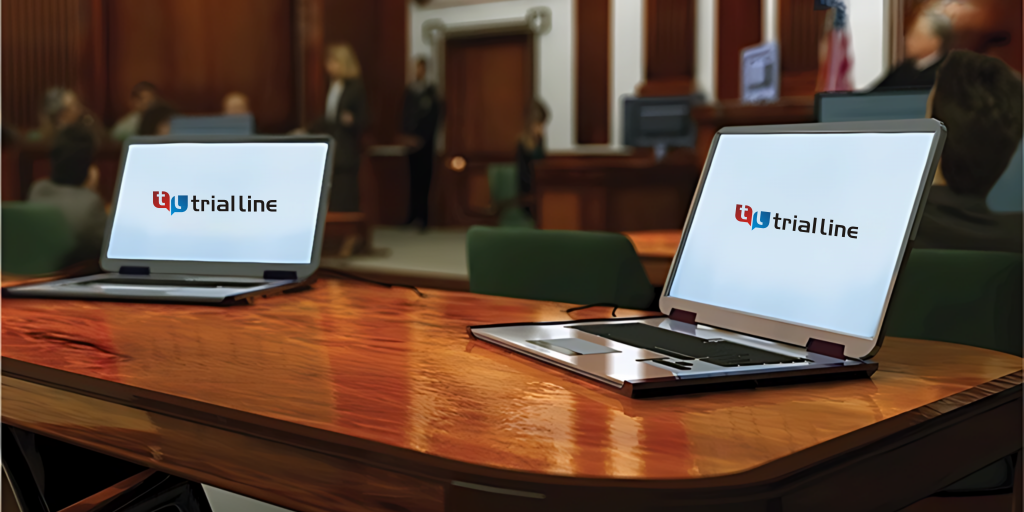Strengthen your case with dynamic and well-structured trial presentations for effective advocacy.
Strengthen your case with dynamic and well-structured trial presentations for effective advocacy.
Blog Article
Exactly How Test Presentations Enhance Your Disagreement and Persuade Jurors
Test discussions offer as a pivotal system for improving legal debates and convincing jurors. The strategic use of visuals not just clears up complex info yet likewise records jurors' interest extra properly than words alone.

Significance of Aesthetic Help
Visual aids play a critical function in improving the performance of trial discussions, as they can considerably raise audience involvement and retention of information. In the context of a trial, where jurors are tasked with processing facility details, aesthetic aids serve to streamline and clarify bottom lines. Charts, graphs, and pictures can communicate data and principles that might or else bewilder or puzzle jurors, enabling an extra straightforward understanding of the proof presented.
Moreover, visual aids help in keeping juror focus throughout the process. By damaging the dullness of spoken testament, these devices can stress important disagreements, making them more unforgettable. Efficient visual help can additionally stimulate psychological actions, which can be critical in persuading jurors to straighten with the presenter's narrative.

Crafting Compelling Narratives
A compelling narrative is vital in test discussions, as it functions as the backbone of reliable persuasion. It permits lawyers to weave with each other truths, evidence, and emotional aspects into a coherent tale that resonates with jurors. This narrative framework enables jurors to comprehend the intricacies of the situation while leading them via the lawyer's disagreement.
To craft a compelling narrative, lawyers should concentrate on clearness and comprehensibility. This includes developing a clear lead character-- commonly the client-- and describing their trip through the occasions concerned. Offering the truths in a rational sequence enhances comprehension and preserves interaction. In addition, using dazzling descriptions can produce psychological pictures that help jurors envision the occasions, making the story more unforgettable.
Furthermore, incorporating crucial themes throughout the presentation reinforces the core message and help in retention - trial presentations. The story ought to not just communicate details but also evoke a feeling of justice, highlighting the stakes included. Eventually, a well-constructed story cultivates a link between the jurors and the situation, positioning the attorney's argument as both legitimate and compelling, thus increasing the possibility of a desirable judgment

Involving the Court Mentally
Efficient court interaction pivots on the attorney's ability to get in touch with jurors on a psychological level. This connection can substantially influence jurors' understandings and their supreme decision-making. Utilizing sob stories enables attorneys to humanize the case, changing abstract lawful ideas right into relatable experiences. By presenting real-life tales or testimonies, attorneys can evoke compassion and compassion, promoting a much deeper understanding of the issues at stake. Full Article
Aesthetic help, such as pictures or video clips, can even more improve psychological engagement, offering jurors with vibrant depictions of the situation's human elements. Crafting a narrative that highlights the struggles and triumphs of the individuals involved makes sure that jurors see past the lawful disagreements and recognize the human consequences of their decisions.
In addition, tone and body movement play a vital duty in sharing emotion. A lawyer's passionate distribution can reverberate with jurors, strengthening their psychological financial investment in the case. It's important to balance sob stories with valid proof, guaranteeing that jurors really feel compelled to act while remaining based in the fact. Eventually, a mentally involved jury is much more likely to be encouraged, making emotional link a vital part of efficient test presentations.
Structuring Your Discussion

The body of the discussion need to be practically fractional into bottom lines, each sustained by compelling evidence. It is helpful to utilize narration techniques to weave facts right into a story that jurors can easily comply with. Aesthetic help, such as charts and videos, can boost understanding and engagement, assisting to highlight important items of evidence.
Real-World Instance Research Studies
Taking a look at real-world instance studies offers indispensable insights right into the art of test discussions and persuasion. The protection advice team effectively used a strategy that combined prominent specialist testimonies with multimedia presentations, you could try these out which mesmerized jurors and eventually affected their choice.
Another remarkable instance is the "McDonald's Coffee Situation," where the plaintiff's attorneys used graphic pictures of the injuries endured by Stella Liebeck. trial presentations. This raw visual proof played an important role in sharing the seriousness of her burns, causing a significant jury honor. Such cases demonstrate that impactful test presentations typically depend upon the efficient combination of visuals and narration to stimulate psychological actions from jurors
Furthermore, the "Casey Anthony Trial" highlighted the relevance of narrative comprehensibility and trustworthiness. The prosecution's failing to develop a compelling timeline decreased their convincing power, highlighting the necessity of a well-structured presentation. Assessing these situations reveals that effective trial discussions need calculated preparation, emotional engagement, and the capacity to reverberate with jurors' worths and ideas.
Conclusion
Trial presentations substantially enhance disagreements and persuade jurors through the critical use of aesthetic help, engaging stories, and emotional engagement. A well-structured presentation equilibriums psychological charms with accurate proof, inevitably reverberating with jurors' worths.
Report this page